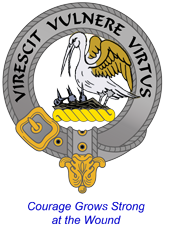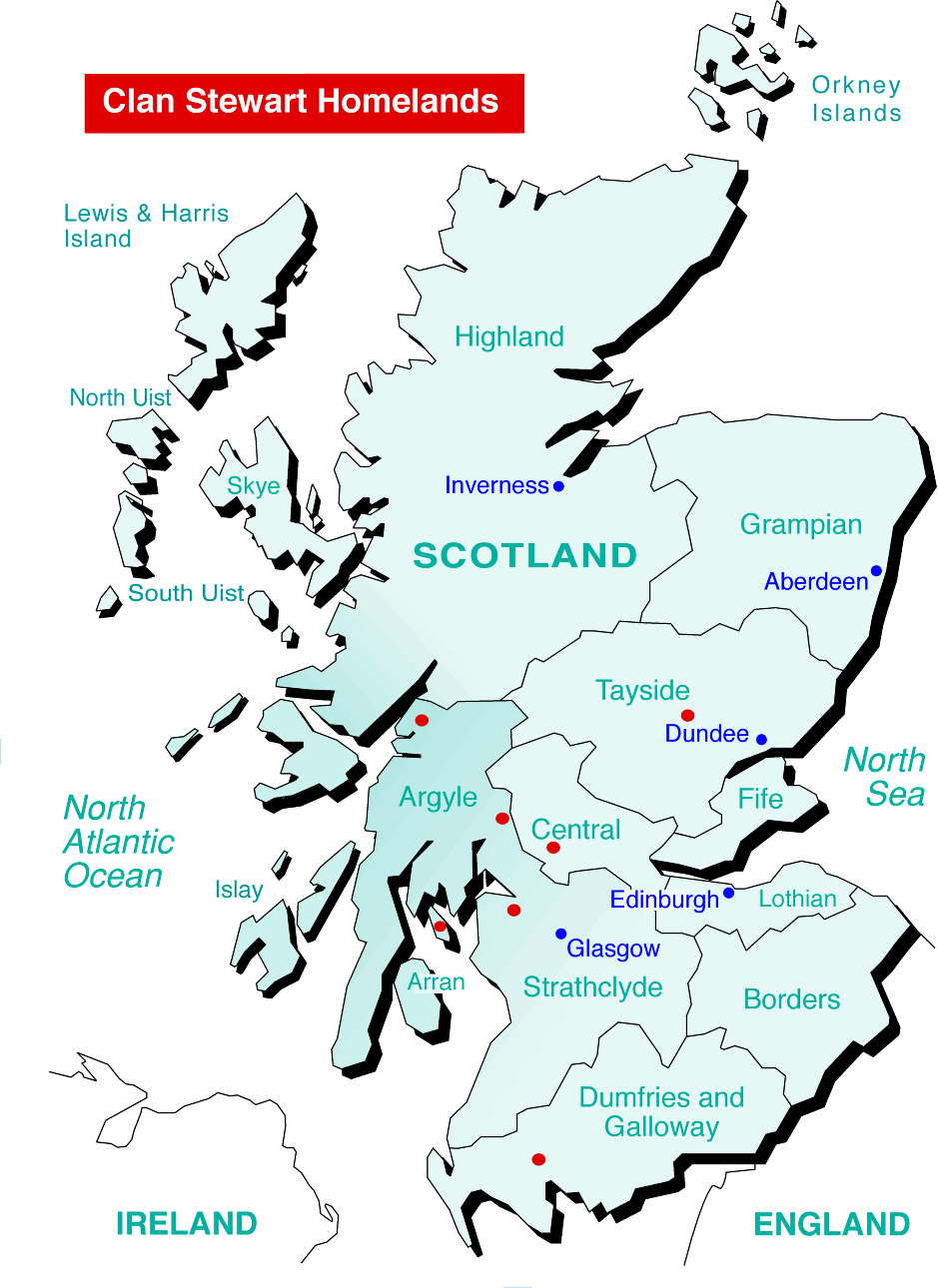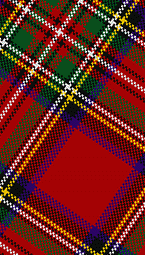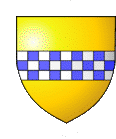 The Scottish Clan Stewart are not just one clan. They consist of several major branches evolving from the descendents of various High Stewards of Scotland. And they in turn all descended from the original High Steward appointed by King David I in the 12th century. Originally a Lowlands family the Stewarts grew over time with many Highlands and Island branches. The first and principal seat of the Stewarts was in Renfrewshire, the area a little north and east of Glasgow. One significant branch are the Stuarts of Bute, owing to their occupation of the
The Scottish Clan Stewart are not just one clan. They consist of several major branches evolving from the descendents of various High Stewards of Scotland. And they in turn all descended from the original High Steward appointed by King David I in the 12th century. Originally a Lowlands family the Stewarts grew over time with many Highlands and Island branches. The first and principal seat of the Stewarts was in Renfrewshire, the area a little north and east of Glasgow. One significant branch are the Stuarts of Bute, owing to their occupation of the Isle of Bute, at the mouth of the river Clyde near what was county Argyle (Argyllshire) in western Scotland. Jamison/Jameson (or one of the many other various spellings) is one of several septs of this clan. Other Clan Stewart branches include Stewart of Appin, Stewart of Atholl, Stewart of Darnley, Stewart of Galloway. Stewarts of Lorn, Stewarts of Balquhidder. and others. Like the Stuarts of Bute, several of the branch Stewart Clans can be found it the area of and around Argyle.
Isle of Bute, at the mouth of the river Clyde near what was county Argyle (Argyllshire) in western Scotland. Jamison/Jameson (or one of the many other various spellings) is one of several septs of this clan. Other Clan Stewart branches include Stewart of Appin, Stewart of Atholl, Stewart of Darnley, Stewart of Galloway. Stewarts of Lorn, Stewarts of Balquhidder. and others. Like the Stuarts of Bute, several of the branch Stewart Clans can be found it the area of and around Argyle.
The Stewarts, were of Norman origins, migrating from Brittany through England to Scotland by the 12th century. They took the name Stewart as a surname, which was derived from High "Steward," the official name for the person in charge of the household and treasury of the King. Which was the official, and hereditary, office they held for several generations of Scottish Kings. Several of this clan would themselves eventually become the Kings and Queen of Scotland as well as the Kings and Queens of England.
The spelling Stuart is sometimes used in place of Stewart. Stuart is the French spelling of Stewart, there being no "w" in the French alphabet. Occasionally the compromise "Steuart" was used. The French spelling was first adopted by the grandfather of James VI, the 4th Earl of Lennox, who took French nationality in 1537 and changed his name from Matthew Stewart to Matthew Stuart. When the young Mary Queen of Scots came home to Scotland, she maintained the French spelling as did her descendants. It became fashionable to spell the name like the Queen and one the branch of the family associated with the Isle of Bute adopted the French spelling of the name as did the Royal House of Stuart.
Clan Stewart's beginnings were in the early 1100's when Walter, the son of Fitzalan - a Norman noble, was appointed by King David I as High Steward of Scotland. It was this Walter's grandson, also called Walter (the 3rd High Steward of Scotland), who first took the name Stewart as a surname, which was then adopted by the family and all descendants. This family was very influential and powerful and Walter’s descendants spread throughout Scotland prior to their ever gaining the Scottish throne, were they ruled as Kings and Queen for nearly 200 years. High Royalty first came with the son of the sixth High Steward (also a Walter), who had married King Robert De Bruis' (Robert the Bruce) only daughter, Princess Marjorie. Their son (and Robert the Bruce's grandson) Robert Stewart, became Robert II and the first Stewart Scottish King, when King David II (Marjorie's brother and Robert the Bruce's only son) died childless in 1371.
 The royal line of Stewarts continued in Scotland uninterrupted until the reign of Mary, Queen of Scots in 1567. However, Mary's son James VI and
The royal line of Stewarts continued in Scotland uninterrupted until the reign of Mary, Queen of Scots in 1567. However, Mary's son James VI and his descendents, continued the Stewart/Stuart Royal dynasty when they became monarchs of Great Britain from 1603 to 1714 and because of the Union of Crowns in 1603 they held the throne of Scotland and Ireland too. These successive monarchs were considered descendants from Mary's second husband and first cousin, Henry Stewart, a member of the clan Stewart of Darnley who had blood connections to the Royal line in England. These later Kings of the House of Stuart such as James I and the Old Pretender were more properly members of the Stewart of Darnley branch, who all drew upon their feudal heritage in Lennox (district). The name Stuart was adopted by Henry and all the successive Kings and Queen from this line of Stewarts. The House of Stuart reigned until the death of Queen Anne of Great Britain in 1714. Anne was succeeded by her cousin, King George I of Great Britain of the House of Hanover. Because of all the family intermarriages the present Royal Family still has Stuart blood links.
his descendents, continued the Stewart/Stuart Royal dynasty when they became monarchs of Great Britain from 1603 to 1714 and because of the Union of Crowns in 1603 they held the throne of Scotland and Ireland too. These successive monarchs were considered descendants from Mary's second husband and first cousin, Henry Stewart, a member of the clan Stewart of Darnley who had blood connections to the Royal line in England. These later Kings of the House of Stuart such as James I and the Old Pretender were more properly members of the Stewart of Darnley branch, who all drew upon their feudal heritage in Lennox (district). The name Stuart was adopted by Henry and all the successive Kings and Queen from this line of Stewarts. The House of Stuart reigned until the death of Queen Anne of Great Britain in 1714. Anne was succeeded by her cousin, King George I of Great Britain of the House of Hanover. Because of all the family intermarriages the present Royal Family still has Stuart blood links.
Until 1808 the Chiefs of Clan Stewart were heads of the Royal House of Stewart (Stuart). George, 8th Earl of Galloways successors have been subsequent Chiefs of the Clan.
Nothing is known of any Jameson family within any Clan Stewart, apart from those Jamesons on the Isle of Bute, a known sept of Clan Stuart of Bute. The tradition that the Jamesons of Ulster, Ireland came from Argyllshire (Argyle) is elusive in that Argyle was a large area at that time which included a number of known Stewart Clans and enclaves, including on the Island of Bute and the Stewarts there. It would be reasonable to assume the Ulster Jamesons did come from the mainland where the Bute Jamesons had perhaps migrated or where the surname had developed independently within another Stewart group or maybe even with another, different family clan altogether.
The history of this clan is rich in its descriptions of many of their chiefs, their life and their battles, all of which is documented well elsewhere. As this is not intended to be a history of the clan the interested reader is urged to separately seek out this documentation
Clans • Clan Stewart • Stuart of Bute • Clan Gunn • Border Jamesons
| [1] |
Scots Kith & Kin:A Guide to the Clans and Surnames of Scotland - Harper Collins |